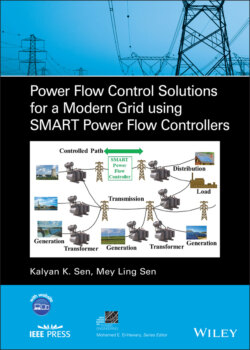Читать книгу Power Flow Control Solutions for a Modern Grid Using SMART Power Flow Controllers - Kalyan K. Sen - Страница 18
1 Smart Controllers
ОглавлениеThe future transmission and distribution system is on the way to be dramatically different from what it is today. Today’s Bulk Power System (BPS), referred to as grid, that encompasses mainly electromechanical devices is continuously integrating Inverter‐Based Resources (IBRs) to convert renewable energy sources into electricity. However, most of these sources are solar and wind, which are intermittent in nature. Commercial nuclear‐powered generators, once turned on, deliver electric power continuously for the next 18 to 24 months before stopping for scheduled maintenance and refueling. This difference alone, in two different types of electricity generation, creates a need for a SMART controller that is capable of managing power flow dynamically. A SMART controller will be essential to increase the transmission capacity of the existing system with line impedance management and the needed dynamic performance. This technology will help operators optimize power flows across the grid to reduce voltage stress on the transmission network, reduce line loss, as well as reduce Green‐House Gas (GHG) emissions from traditional carbon‐based generation.
SMART is an acronym that stands for Specific, Measurable, Attainable, Relevant, and Time‐bound. SMART solutions, which have been used for decades in many fields, are well suited for applications in electrical engineering. A controller, also referred to as a compensator, is a general term to describe a regulator that regulates voltage, current, phase angle of a line voltage, resistance, reactance, impedance, and so on, directly or indirectly in an electric circuit. A controller can be designed to perform a task (e.g. voltage regulation) and/or multiple tasks with varying cost and complexity. In the simplest term, a SMART Controller is what one procures is based on what one needs. A SMART Controller is an evolving technology that uses the best technical features from all previous concepts to meet the present need by blending functional requirements with the most cost‐effective solution. A SMART Power Flow Controller (SPFC) enhances the power flow controllability in electric power transmission and distribution systems. It is recommended that utilities choose a solution that meets their need in terms of reliability, robustness, cost‐effectiveness, component non‐obsolescence, efficiency, ease of relocation, and interoperability.
